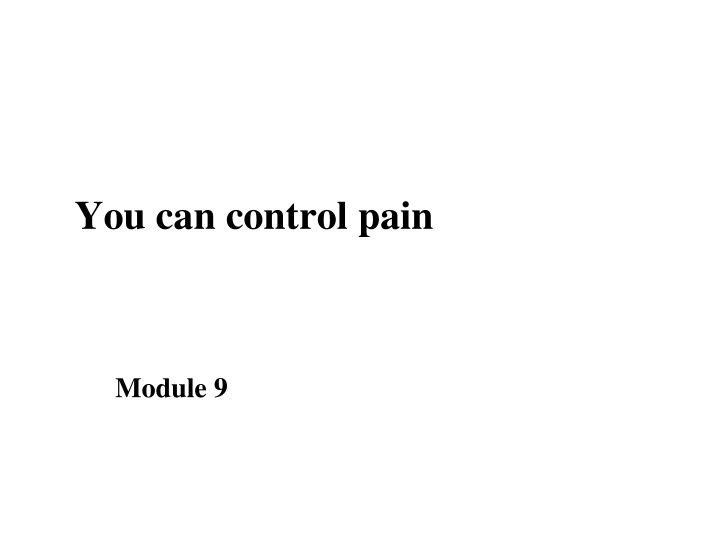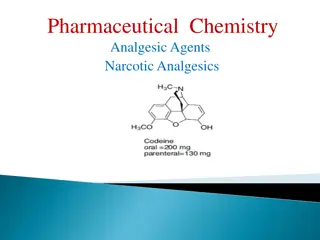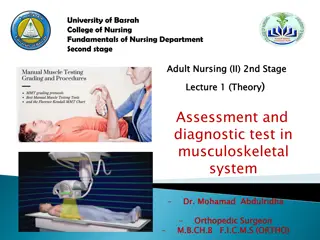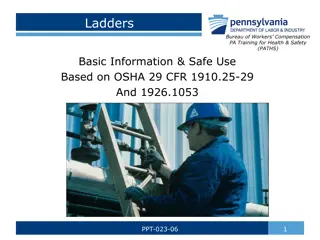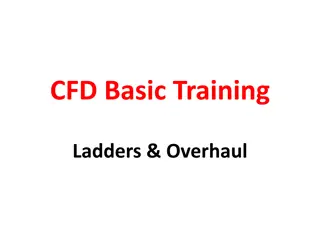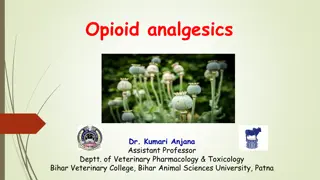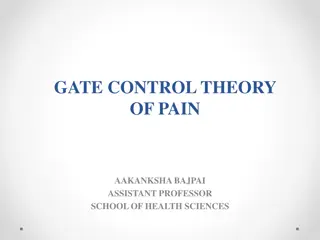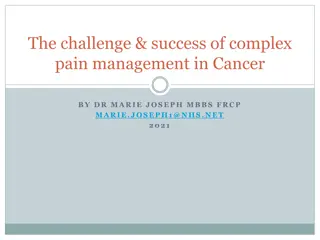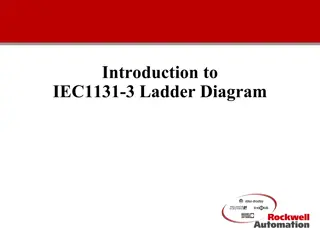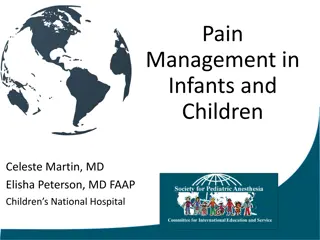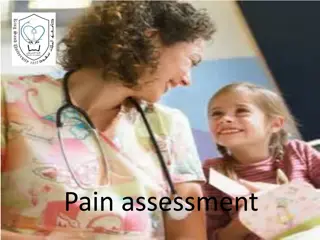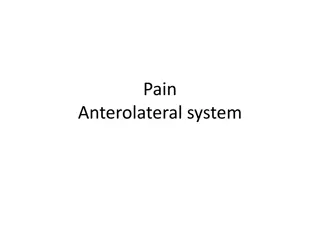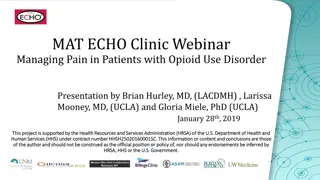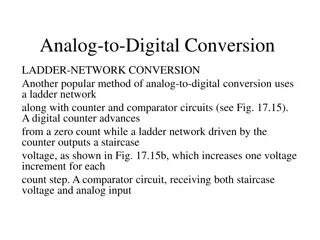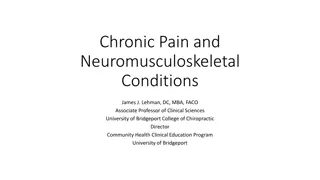Pain Management Strategies and Analgesic Ladder Explained
Explore the 3-step analgesic ladder for pain control, featuring examples of drugs for each step and the use of adjuvant medications. Learn about pain assessment, total pain dimensions, WHO cancer control program, and effective pain management techniques. Dive into non-opioid and opioid options, with insights on side effects, dosages, and route of administration.
Download Presentation

Please find below an Image/Link to download the presentation.
The content on the website is provided AS IS for your information and personal use only. It may not be sold, licensed, or shared on other websites without obtaining consent from the author.If you encounter any issues during the download, it is possible that the publisher has removed the file from their server.
You are allowed to download the files provided on this website for personal or commercial use, subject to the condition that they are used lawfully. All files are the property of their respective owners.
The content on the website is provided AS IS for your information and personal use only. It may not be sold, licensed, or shared on other websites without obtaining consent from the author.
E N D
Presentation Transcript
You can control pain Module 9
Learning objectives Describe the 3 steps of the analgesic ladder Give examples of drugs from each step of the ladder Explain the use of adjuvant drugs
Pain Assessment careful evaluation remember total pain scales / tools / charts detailed history examination appropriate investigations
Total pain Physical Emotional Spiritual Social
WHO Comprehensive Cancer Control Programme prevention early detection and curative treatment cancer pain relief and palliative care
Pain management by the ladder stepwise progression by the clock regular prescribing by the mouth oral route preferred by the individual WHO 1986 Cancer Pain Relief
By the ladder Pain persisting or increasing Opioid for moderate to severe pain Non-opioid Adjuvant 3 Pain persisting or increasing Opioid for mild to moderate pain Non-opioid Adjuvant 2 Pain persisting or increasing 1 Non-opioid Adjuvant
By the clock SIDE EFFECTS: Drowsiness By the clock Morphine dose Too High PRN PAIN
By the individual hepatocellular carcinoma
Pain management; non opioids paracetamol NSAID S diclofenac 50mg TDS inflammatory based pain bone pain
Pain management; opioids Step 2 analgesics / weak opioids codeine dextropropoxyphene tramadol
Pain management; opioids Step 3 analgesics; strong opioids morphine fentanyl nb don t use pethidine or pentazocine
Pain management Adjuvant analgesics severe swelling or inflammation nerve damage (neuropathic pain) muscle spasm (skeletal muscle) abdominal cramps (smooth muscle)
Pain management; adjuvants severe swelling or inflammation steroids nerve damage (neuropathic pain) tricyclics; amitriptylline, imipramine anticonvulsants; sodium valropate, clonazepam muscle spasm (skeletal muscle) diazepam, lorazepam abdominal cramps (smooth muscle) hyoscine butylbromide
Pain management severe swelling or inflammation hepatocellular carcinoma liver capsule stretch
Pain management; adjuvants steroids dexamethasone 8-16mg po / parenteral swelling / oedema raised intra-cranial pressure nerve compression visceral stretch
Pain management nerve damage (neuropathic pain) herpes zoster burning neuropathic pain
Pain management; adjuvants anti-depressants amitriptyline (low dose) 10-25mg po impramine neuropathic pain potentiate descending inhibitory pathways block pre-synaptic reuptake noradrenaline and 5HT3
Pain management; adjuvants anti-convulsants sodium valproate 200-600mg gabapentin 300-2400mg clonazepam 0.5-2mg (carbamazepine) neuropathic pain membrane stabilisers may prevent abnormal impulse generation
Pain management muscle spasm (skeletal muscle) rectal cancer tenesmus
Pain management abdominal cramps (smooth muscle) bowel obstruction cramping abdominal pain
Pain management; adjuvants muscle relaxants smooth muscle spasm buscopan dicyclomine skeletal muscle spasm diazepam baclofen tizanidine
These resources are developed as part of the THET multi-country project whose goal is to strengthen and integrate palliative care into national health systems through a public health primary care approach Acknowledgement given to Cairdeas International Palliative Care Trust and MPCU for their preparation and adaptation part of the teaching materials for the Palliative Care Toolkit training with modules as per the Training Manual can be used as basic PC presentations when facilitators are encouraged to adapt and make contextual
